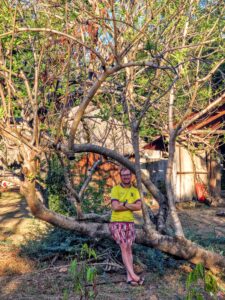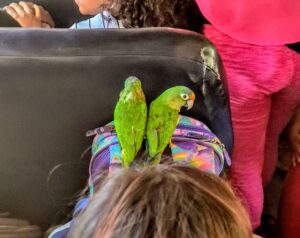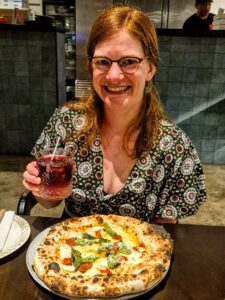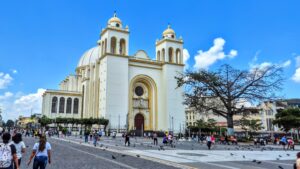The journey from Nicaragua to El Salvador was a little complicated. Have a look at a map of the region and you’ll see that El Salvador doesn’t actually border with Nicaragua at all. The logical route overland would be via Honduras. However, last year the UK introduced a visa for Hondurans, and they responded in kind. Several months before we left I reached out to the Honduran embassy in London about getting a visa, but was told they needed to know exactly when and where we would be visiting. This is pretty impossible to predict more than a few days in advance, let alone a few months! So we almost gave up on the idea of going overland the whole way up Central America. I did some research though and found mention in a blog about a boat that ran a few times a week from Nicaragua to El Salvador without going through Honduras. Chris was initially pretty sceptical about my less than official findings! We’d thought maybe we could fly straight to Guatemala instead. However, from the start of the trip we met people travelling south who had been on the infamous ‘Mario’s boat’ and told us that El Salvador was a must do as it is safe right now and the people are lovely. It definitely lived up to the recommendations.
We were given Captain Mario’s number from our German travelling friends Lara and Lena who continued to be a source of great recommendations. I messaged Mario and we booked our passage. The boat runs several times a week and they have a well organised process, although it was good that we were prepared for it to take a whole day!
We left Rancho Esperanza and Jiquilillo on the 6:30am local bus. This was apparently the rush hour bus as it was pretty full when we boarded. It kept stopping and took on board a class worth of school kids and people transporting all kinds of things including a live chicken! We were near the back of the bus, with the back door flapping open and the conductor hanging onto the outside to make more room for people inside. I was firmly wedged in a hunched position under the overhead luggage rack, bashing the back of my neck on the rusty metal rack every time we hit a bump in the dirt road. I could feel something dripping down my leg from the luggage store and was hanging onto my small backpack and trying to keep it off the floor. My twisted posture did at least mean I could see out of the window, so I was able to spot when we turned onto the main tarmac road and needed to get off. The school kids realised what we wanted and got the conductor to signal the driver to stop to let the ‘gringos’ off.
As our bags were squeezed out of the bus, the conductor very nicely pointed up the road at a bus coming the other way and said we should take it to get to our next stop of Puerto Potosí. We boarded the bus and were pleased to find it slightly less hectic, still no seats free but plenty of standing room and a paved road the whole way. A family boarded with several children, one of whom had a backpack with two parakeets perched on the top, they stayed there the whole journey!
On arriving at Puerto Potosí, the conductor shouted to let everyone know it was the last stop and we should get off here for the immigration point. We were immediately met by a nice man called Juan, who had a clipboard with our names on. We’d been warned he would need copies of our passports and hadn’t been able to get to a copy shop, so we nervously handed over both passports and he went off to get them copied for us. He left us with instructions of where to go and we set off, following a couple of locals heading the same way. It was all very efficient, and we waited by immigration whilst Juan sorted everything out with our passports and immigration forms. We got chatting to the only other white person waiting for the boat, an Australian called Charlotte who had done the overland transfer south a few weeks previously and was heading back north via sea to meet friends.
A boat arrived and a long queue formed for people entering Nicaragua to get their bags checked, each bag had to be opened and searched through in turn. We queued up in the opposite direction and then got to interrupt the people arriving so our bags could be opened and searched, and we could then board the boat. To board we had to wade knee deep in the water, carrying all our bags, and then climb up onto the back of the small lancha boat. We’d been warned by Mario and were prepared, wearing swim shorts and sandals. We passed the big bags forward and they were safely tucked away into the dry front compartment of the boat. We were sat on a bench right near the engine, which made for a smoother but noisier ride. Snacks and a drink each were handed out (a luminous orange soda called Kolashampan!) and we set off. The sea was incredibly calm, and we got amazing views across to Nicaragua, Honduras, and El Salvador. We sped across the Gulf of Fonseca in about an hour and a half. All my fears about waves and getting our stuff wet were entirely unfounded!
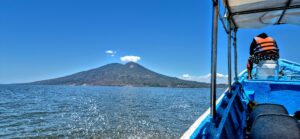
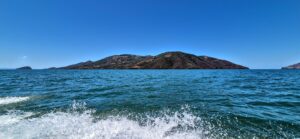

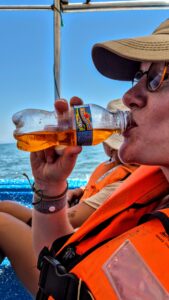
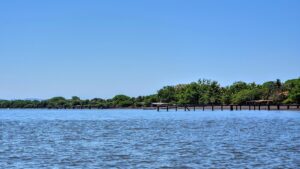
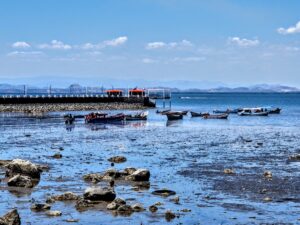
We arrived at a nice jetty in La Union and unloaded then walked over to immigration. Again we were met by a nice person with our names on a clipboard who took our passports and headed into the immigration office. A little while later they came out with passports stamped, all ready to go. One final requirement was a strange line up where we all stood in a group and they took a photo, the immigration officer joked that it was just for his memories! We chatted with the shuttle organisers and they explained we’d have to wait two hours for the shuttle as they needed to wait for the next boat with the tourists who had got a shuttle all the way from Leon to Puerto Potosí. Our shuttle bus was already in La Unión so they offered to put our big bags on the bus so we could walk around more easily.
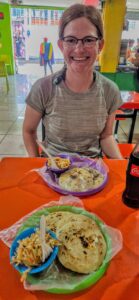
I’m definitely more relaxed now about very long waits! We had about 1.5 hours in Puerto Potosí and 2 hours in La Unión, but the time passed by fast. We went for lunch, our first papusas (stuffed corn pancakey things), so delicious! Then we went for a beer overlooking the port. Our shuttle eventually set off, full of English people who were doing the same as us. Over half the bus were headed to El Tunco on the coast, so the shuttle went via the coast before heading up to San Salvador. It was a very long journey of five hours, but a comfy air conditioned minibus at least, and ‘only’ about an hour longer for us to travel via the coast, which was annoying but not the end of the world. Being a private shuttle, I was able to get my headphones out and catch up on podcasts and have a bit of a snooze. Not everyone on our bus had got so into the relaxed Central America timescales though, after we dropped people off in El Tunco, the only other guy on the bus started swearing and ranting to us about how rubbish the transfer company was and how bad it was to take this long and go via another town. He was so angry and loud, the driver could definitely understand him and started driving faster, weaving through the traffic in the dark. The angry guy reached over and tapped him on the shoulder and shouted to him in bad Spanish to slow down! Thankfully the driver did slow down and we made it in one piece to our hotel.
After such a long journey it was very nice that we had booked into a very fancy hotel for our stay in San Salvador. Chris had some hotel points so we used them for our stay. We looked quite out of place turning up in our sweaty travelling gear with the giant rucksacks. We were met my smart staff and shown in past photos of presidents and royalty who had previously stayed there!
We had much needed warm showers (a luxury in this region) and scrubbed up ready for a night out in the modern middle-class neighborhood of Zona Rosa. We went to a restaurant across the street in a large fancy shopping mall, with an office tower above with the Google logo on. The food was good and the people friendly. It felt very much like a modern European city. The people were smartly dressed, and I noticed the women especially were dressed in a more European style. A lot more people wear glasses and watches than we had seen in other places.
We had one full day in the city. We found a nice place for breakfast, then we took a taxi into the city centre. I had found a couple of interesting churches to visit and we were dropped off in front of the first, which had huge gates across the front all locked shut! The taxi driver thought it was closed as well and was apologetic, we decided we’d just walk on another block or so to the Metropolitan Cathedral in the main square. This was very impressive from the outside, although surprisingly plain inside. We went to visit the vast and equally plain crypt downstairs, where there was a moving tribute and statue to Óscar Romero, a priest who was assassinated in 1980 whilst giving mass at a hospital – his portrait is displayed in a lot of churches across the country.
We came out of the cathedral before mass and decided to double check the other church for opening hours. Upon reading the google reviews we found the entrance was actually not at the front, but down a tiny side alley! We rushed back across as there was by this point only 10 minutes until the church closed for visitors. This church the Iglesia El Rosario is particularly special as it is a very strange looking concrete block from the outside, but on the inside the daylight through the stained glass windows shines a rainbow pattern on the floor and it is very beautiful. This is the first church I’ve been in that I had to borrow a wrap from the curates to wear around my waist as I wasn’t allowed in with my above-knee shorts. We spent our 10 minutes taking photographs and being in awe of the space.
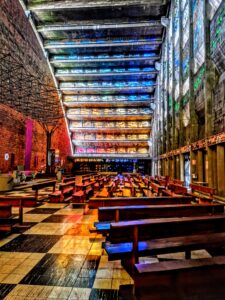
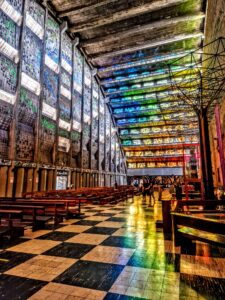
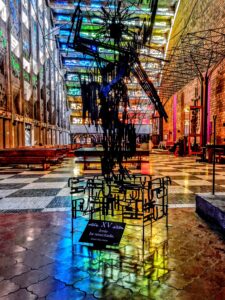
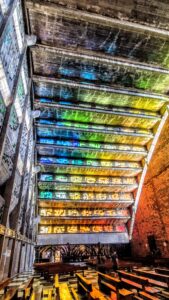
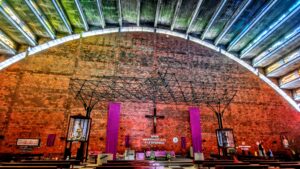
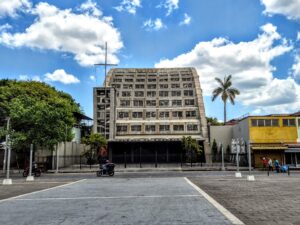
We realised we should stop relying on our old guidebook to help us find opening times and information in El Salvador, which has clearly changed a lot over the last few years. We looked at reviews online and decided to visit the National Palace. This was a beautiful building, with entry including a guided tour of what was the home of the Government until 1974. The rooms are fairly empty but the courtyard in the middle was so impressive and it was interesting to walk around. Our tour guide then recommended we go to the national theatre and the national library that day as well. We headed to the library next, it’s a large modern building funded by the Chinese, and is quite simply the best library I’ve ever been in, we could have spent hours there. Each floor is aimed at a different age range and full of entertaining displays (including a whole section for Harry Potter) and interactive areas (computer games, lego, jigsaw puzzles), as well as lots and lots of books. On the top floor we got a great view across the main square and sat flicking through coffee-table books in the cool of the air-conditioning.
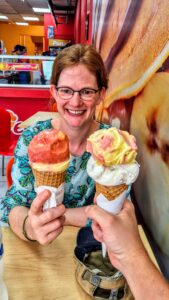
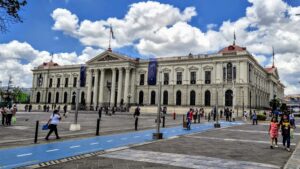
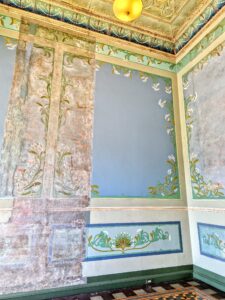
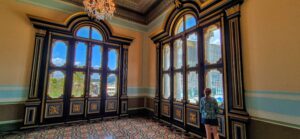
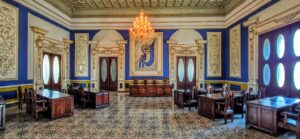
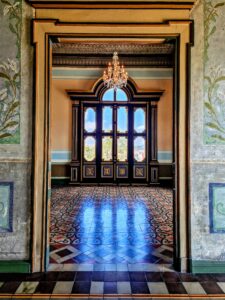


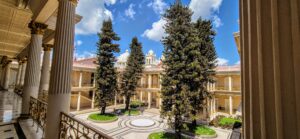
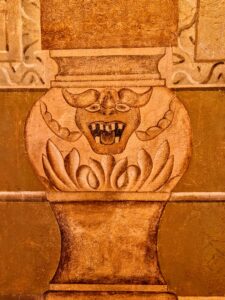
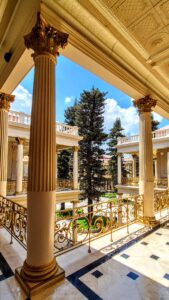
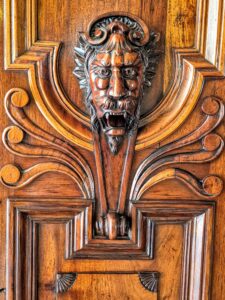
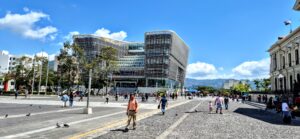

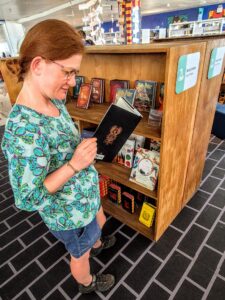
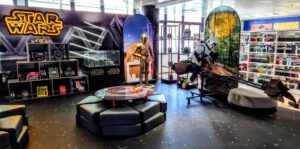
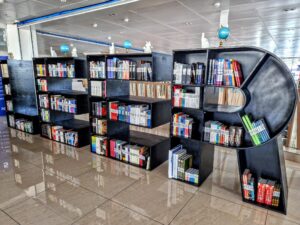
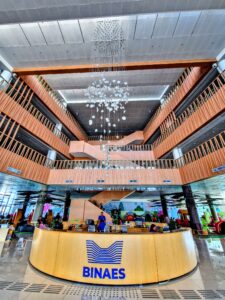
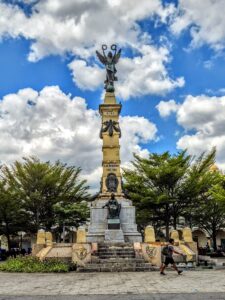
Next we headed to the national theatre and took a tour, we usually try and take tours in Spanish where we can to help us improve and so we set off with just us two and a guide. The El Salvadorian accent is really nice and clear, although they do talk quite fast! Part way through our tour, an American couple and their Spanish-speaking mum came to join us. We then had the bizarre situation of the guide delivering a tour in Spanish and then English, even though most people in the room had English as a first language. It was great for us though, confirming that we’d understood pretty much all of the Spanish context!
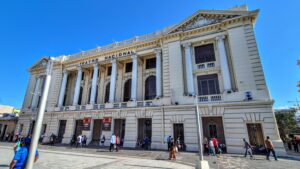
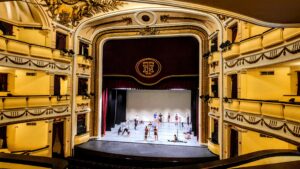
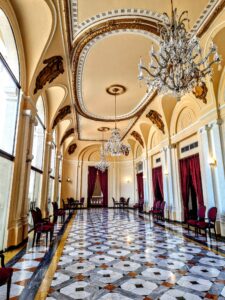
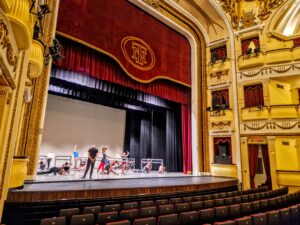
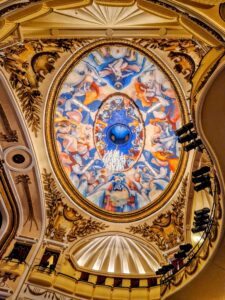
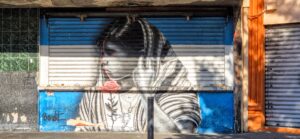
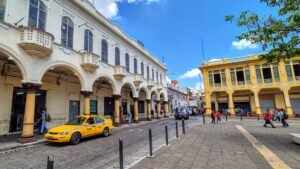
That evening we went back to Zona Rosa and went for dinner at a small brewery we’d stumbled upon that morning whilst trying to find our breakfast place. The beer was the best we’ve had so far this trip, we did a taster flight and then the staff were happy for us to try the ones we’d missed out on too. We spend a couple of hours slowly going through the different beers and enjoying some very nice food too. Unfortunately for Chris the only veggie main was a pizza (two pizza nights in a row!), but it was a good pizza and the beer was excellent.

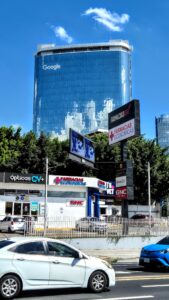
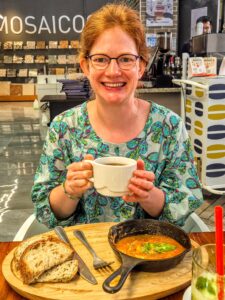
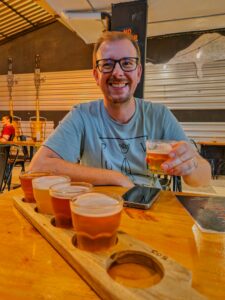
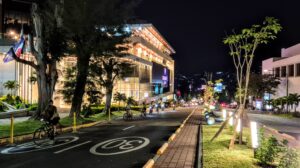
There was a lot more to do in the city that we expected, and I think we could have spent a couple more days exploring. We enjoyed our time here and it was a nice introduction to El Salvador, of course, the fancy hotel definitely helped with those good first impressions!
Next we headed out to a smaller city, Santa Ana, for a proper taste of local life, more on that next time.


